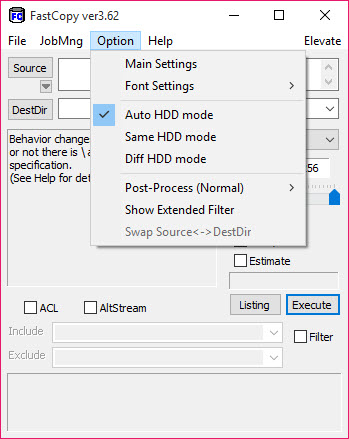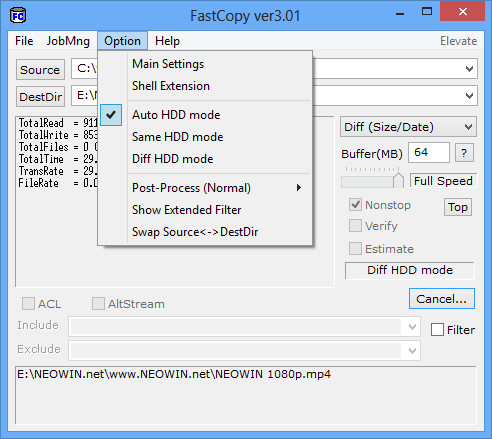

This would register the script, and it will now copy all files from your source to the destination server every day at 3 a.m.UWRF Fast Copy is your dedicated full-service print shop! $Task | Register-ScheduledTask -TaskName 'File Transfer Automation' -User 'administrator' -Password 'supersecret' $Task = New-ScheduledTask -Action $Action -Trigger $Trigger -Settings (New-ScheduledTaskSettingsSet)įinally, we'll actually create the scheduled task on the system, calling it File Transfer Automation and running it under the local administrator account with the provided password. Next, we'll create the scheduled task in memory using the action and trigger that we just created. $Trigger = New-ScheduledTaskTrigger -Daily -At '3AM' Next, we'll create a trigger to kick it off at 3 a.m. NoProfile -File 'C:\CopyFiles.ps1' –SourcePath 'C:\Source –DestinationPath '\\SERVER\Destination'" 'C:\Windows\System32\WindowsPowerShell\v1.0\powershell.exe' -Argument "-NonInteractive -NoLogo $Action = New-ScheduledTaskAction -Execute Here, I'm assuming that your script is located at C:\CopyFiles.ps1. This defines the EXE to run along with any arguments. First, we'll create the scheduled task action. To do this, you'll need to complete four rough steps:Ĭreate the scheduled task on the computer.
#How to use fastcopy how to#
Let's learn how to create the scheduled task in PowerShell as well. You could create scheduled tasks by running the Task Scheduler GUI and creating one that way, but we're all about automation here. In this example, we're going to create a scheduled task to run this script once a day at 3 a.m. Now that you have your CopyFiles.ps1 PowerShell script, head over to the computer where you'd like to kick it off. This example would copy all files and subfolders in the C:\Source folder to the \\SERVER\Destination shared folder. \CopyFiles.ps1 –SourcePath C:\Source –DestinationPath \\SERVER\Destination Manually kicking off this script will look something like this: &. If SourcePath and DestinationPath were actual paths, we'd have to create separate scripts for every different file copy! By making both of these values, parameters allows us to pass in different This is a parameter block containing two parameters: SourcePath and DestinationPath. The most complicated part of this script is the param() section.

This script will contain the following code: param(Ĭopy-Item –Path $SourcePath –Destination $DestinationPath -RecurseĪs you can see, the script is simple, but it leaves room for lots of customization depending on your environment.

Related Article: Developing an HTTP Script Monitor in PowerShell Create Your Scriptįirst you need to create a script to perform file transfers. Otherwise, the tricks I'm about to show you may not work properly. But before we start, I'm going to assume that you have at least PowerShell v4 installed on your computer. In this article, we'll go over how to perform file transfers using PowerShell by writing a script and creating a scheduled task to kick off
#How to use fastcopy windows#
Also, not only is it easy to manually kick off PowerShell scripts, but you can also trigger transfers via PowerShell scripts by using Windows Need to quickly copy one or more files from one folder to another, PowerShell is a great way to do that. When automating file copies, especially in a Windows environment, your go-to scripting language is going to be Windows PowerShell. It's only when you start copying a lot of files on a frequent basis that you run into problems. It's just a matter of specifying a source and a destination path and setting a few other optional parameters. There are a number of ways to get the job done: dragging and dropping the file in Windows Explorer, Copy-Item with PowerShell or the simple copy command You shouldn't have to babysit all of the file copies scheduled tasks is perfect for automating this job.Ĭopying files to another folder or server is a trivial task, no matter how you do it.


 0 kommentar(er)
0 kommentar(er)
